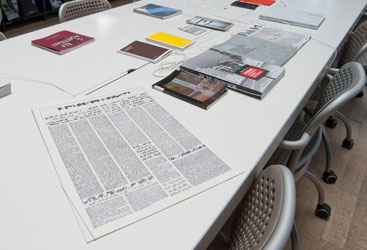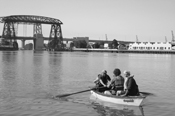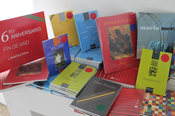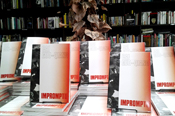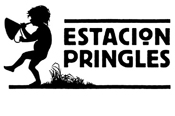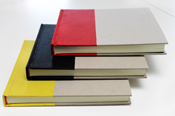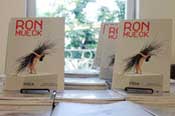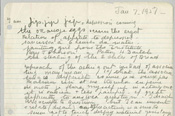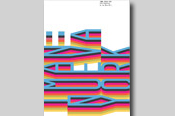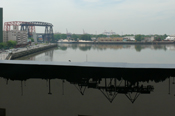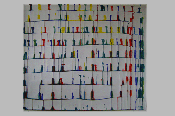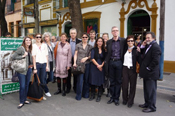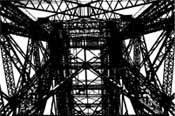Catálogo Arte en Escena/Online
Catálogos PROA : ¡12 cuotas sin interés!
Catálogo Jeremy Deller
Catálogo Es posible porque es posible
disponible en Librería Proa
Catálogo Esta escrito porque esta escrito
disponible en Librería Proa
¡Nuevo Menú en Café Proa!
Catálogo Daros Latinamerica
Disponible en Librería Proa
Libros Recomendados - Junio/julio 2015
Catálogo de la exposición Mona Hatoum: !Sold out!
Espacio Contemporáneo: Expediciones a Puerto Piojo
Catálogo Lo Clásico en el Arte. Disponible en LibrerÃa Proa.
LibrerÃa Proa: ¡Ofertas de fin de año!
Catálogo de la exposición Impromptu ¡Disponible en librerÃa Proa!
Promoción especial catálogos: Fabio Mauri+Lo Clásico en el Arte
Espacio Contemporáneo. La sin futuro presenta Te lo prometo
ProaTV. Espacio Contemporáneo: Final del Juego. Making of
Fabio Mauri Catalogue. Available in Proa Library
¡Oferta de Fin de Año 5 Catálogos por $100 pesos!
Contemporary Space: End of the Game. A tribute to Julio Cortazar 100 years after his birth
Espacio Contemporáneo: Segundo piso por escalera. Gran ventanal con vista al rÃo
El Fotolibro Latinoamericano
Premio Indio Rico 2013
November offer: novels + postcards of Argentine writers
Espacio Contemporáneo: Romántico
Cuadernos Proa para artistas
Kids menu. Special dishes for the younger ones
Catalogue "Algunos Artistas / 90 - HOY"
Friendship Day in Café Proa: Pizza+Champagne
"Registros contemporáneos", by Ana MartÃnez Quijano
A special menu for June 20th
Father's Day: Special Menu at Café Proa
Contemporary Space: 5 years
Ron Mueck Catalogue
With works and itext in Spanish
Esteban Ãlvarez / Pablo Rosales / Cristina Schiavi. Interventions in the Library and the Café
June. Recommended Books
"Distrust of Images": an anthology edited by Caja Negra
Horacio Zabala: Book Presentation. Sunday, April 7 â 5 pm
Release of Jean Genet's "El atelier de Alberto Giacometti"
PROA TV. Entrevista en Café Proa con el chef Lucas Angelillo
Buy Now! All credit cards and international shipping
"Los creadores de un estilo. Minimalismo y Modernismo Clásico"
Catalog: Alberto Giacometti
Catalogue "Systems, Actions & Processes. 1965 - 1975"
Air de Lyon. Artists' books
Proa publication at Perfil newspaper
Lang/Baumann's intervention at Proa's Library
Proa presents the unpublished writings of Louise Bourgeois
Arte de las pampas en el siglo XIX
Lucio Dorr's intervention at Proa's Library
Imán: Nueva York's Catalog
The Universe of Futurism Catalogue: sold out
Artists´ Editions: Inés Drangosch / Mirtha Dermisache
Catalogue The Time of Art. Masterpieces from the 16th to the 21st century
Leandro Katz presented his book "The Ghosts of Ãancahuazú"
Recolectora de paisajes: Intervención de Inés Drangosch en LibrerÃa Proa (October, 2009 - January, 2
Lindero Intervention. Curator: Ana Gallardo
The works specially prepared for the exhibition “Lindero” (boundary) are a narration of these themes throughout Proa’s building.
Artists: María Inés Drangosch, Daniel Joglar, Ismael Pinkler, Fernanda Laguna, Mariela Scafati y Marcela Sinclair
Sur de Babel October: Resolana, by LucÃa Mazzinghi
This month the selected book is “Resolana” by the Editorial Paradiso.
August Sur de Babel: El sÃndrome de RasputÃn, of Ricardo Romero
Sunday, August 9 at 17.30hs. will be the next open interview “Sur de Babel” in the Auditorium of the Foundation. This month the book chosen is “Síndrome de Rasputín”, of Editions Aquilina.
Sur de Babel presents "That summer" the book of July in Proa Foundation
In july, Moira Irigoyen will comment on her new book That summer through an open interview.
El color del agua will be presented in Fundación Proa
The book of watercolors and poems "El color del agua" by Martín and Lila Reyna Zemborain is presented in the auditorium on saturday 25st of July 17:00hs.
Block
An intervention of the artist Jorge Macchi and his own drawings, in Proa Library.
International editors' meeting at Proa
On the frame of TyPA Week for Editors in Buenos Aires, Fundación Typa and PROA flattered the visiting international editors with a working breakfast.
Books by artist
The collection of Centro per l'arte contemporaneo Luigi Pecci of Italy arrives to PROA Library.
Proa in La Boca
by the photographic view of Facundo de Zuviría.
The chef suggestions

 Visual Art
Visual Art  Words
Words Music
Music


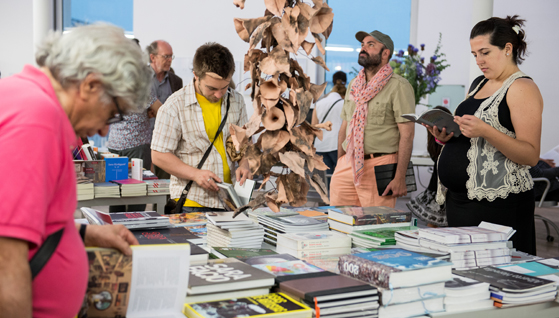

 AntologÃa de entradas inéditas del blog de un empleado mexicano de panda express, Megan Boyle
AntologÃa de entradas inéditas del blog de un empleado mexicano de panda express, Megan Boyle Hoy el cielo está azul y blanco con manchas azul brillante y una luna pálida y pequeña y voy a destruir nuestra relación hoy, Tao Lin
Hoy el cielo está azul y blanco con manchas azul brillante y una luna pálida y pequeña y voy a destruir nuestra relación hoy, Tao Lin
 Didascalias del Teatro Caminito
Didascalias del Teatro Caminito
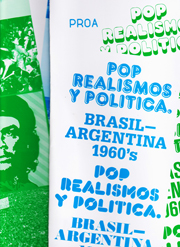 The edition Art of Contradictions. Pop, Realisms and Politics. Brazil - Argentina 1960 contains a body of works and texts that evidences the effervescence of artists, as well as the challenges they faced, as they navigated the eagerness to modernize and the urgency of revolutionary struggles.
The edition Art of Contradictions. Pop, Realisms and Politics. Brazil - Argentina 1960Â contains a body of works and texts that evidences the effervescence of artists, as well as the challenges they faced, as they navigated the eagerness to modernize and the urgency of revolutionary struggles. 





